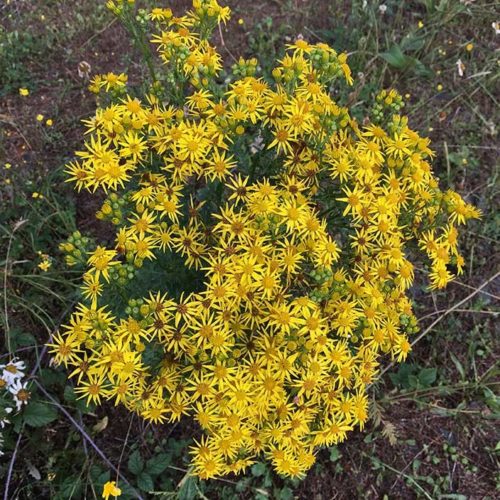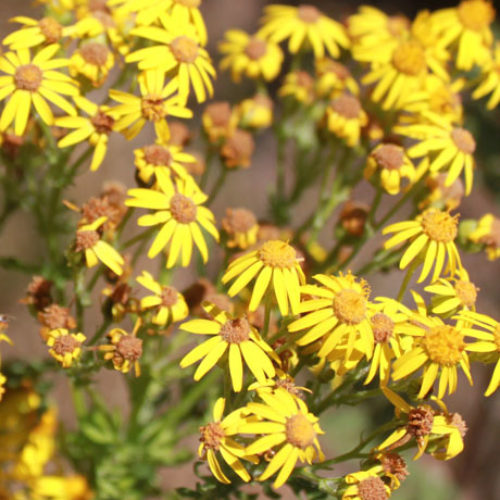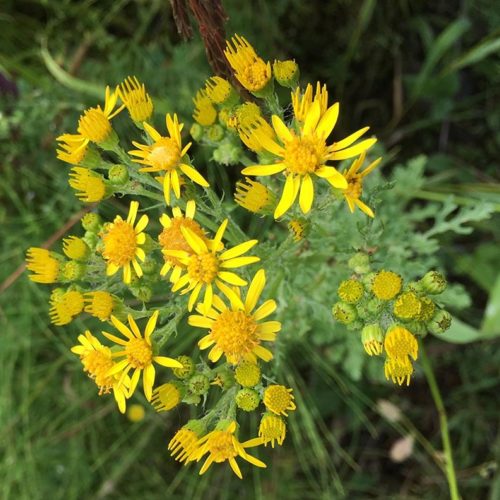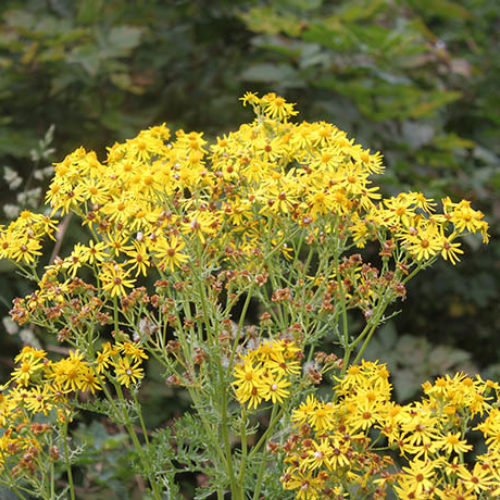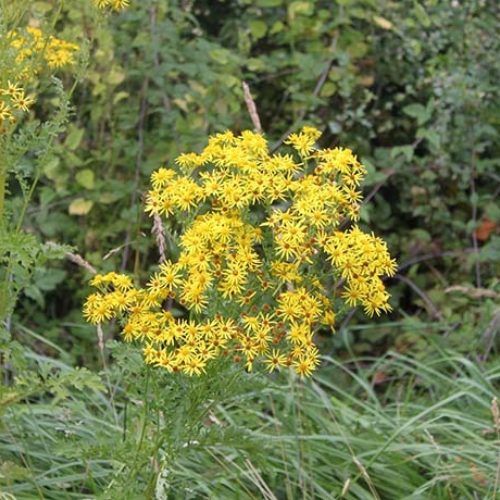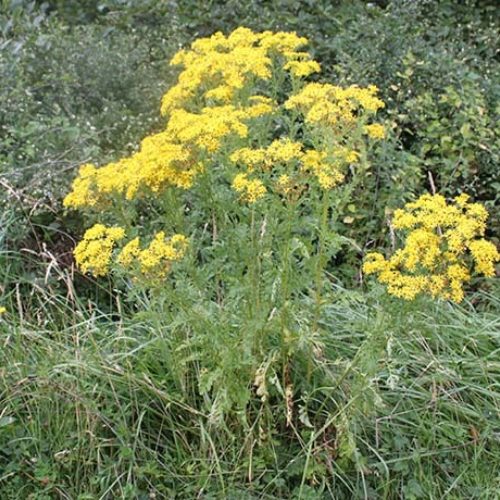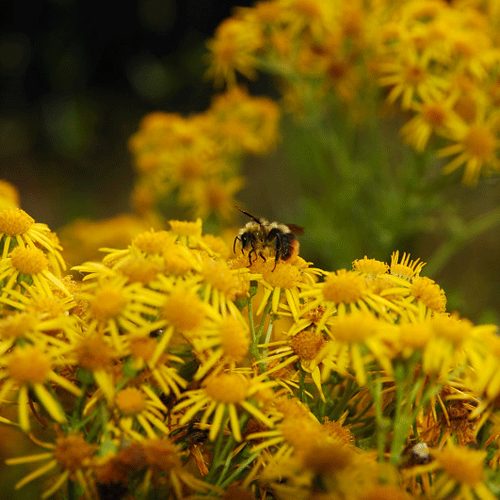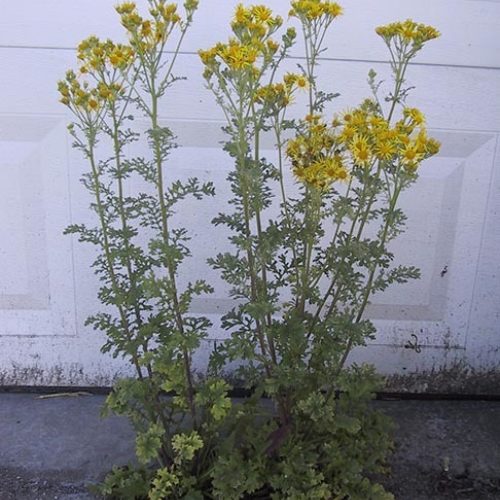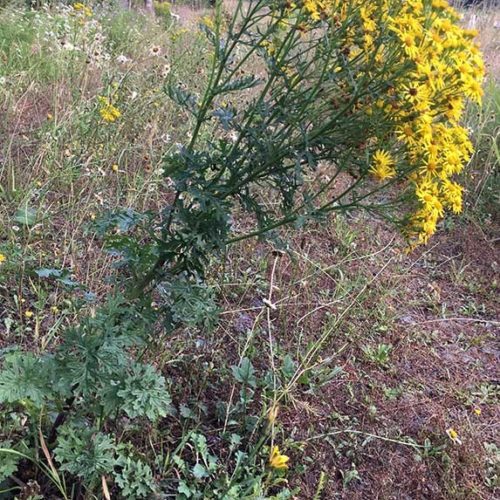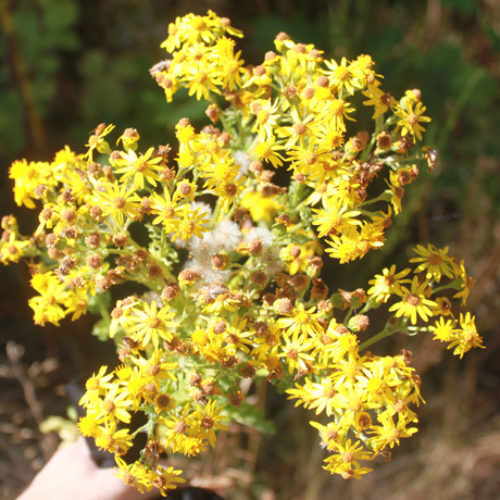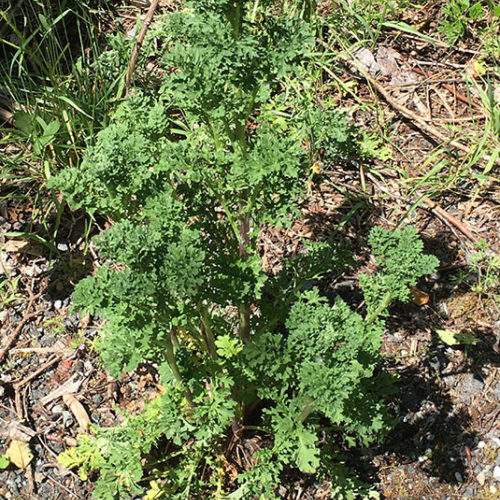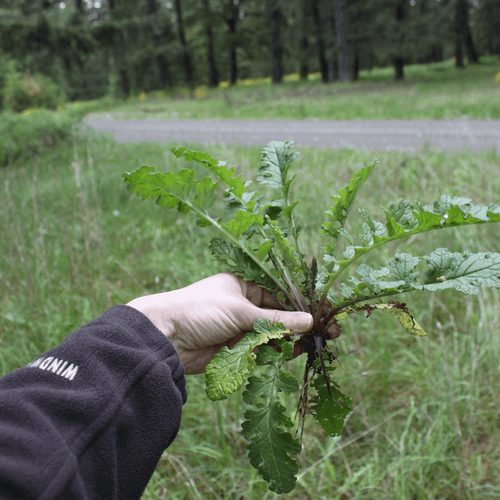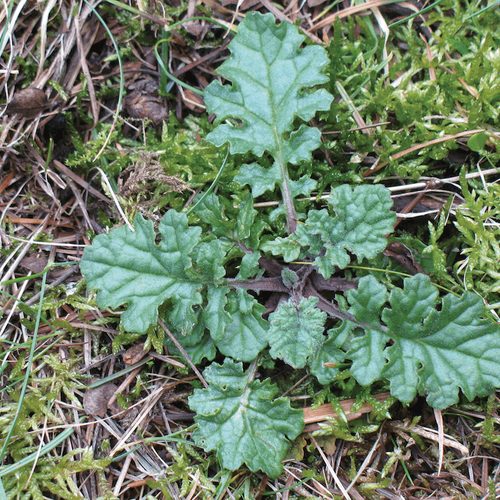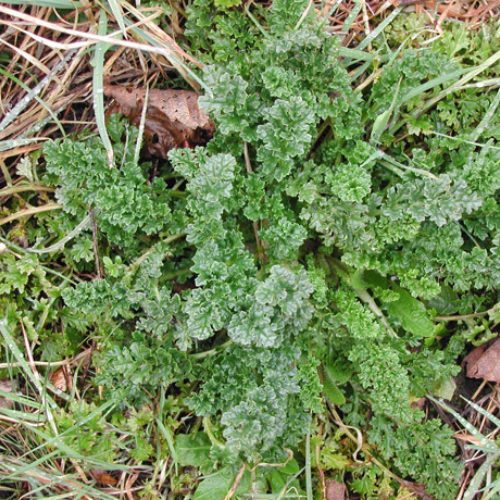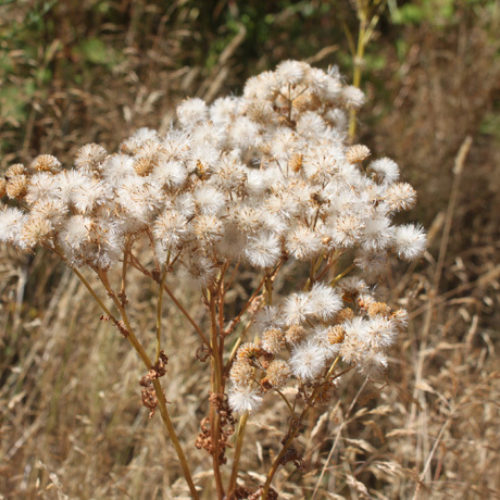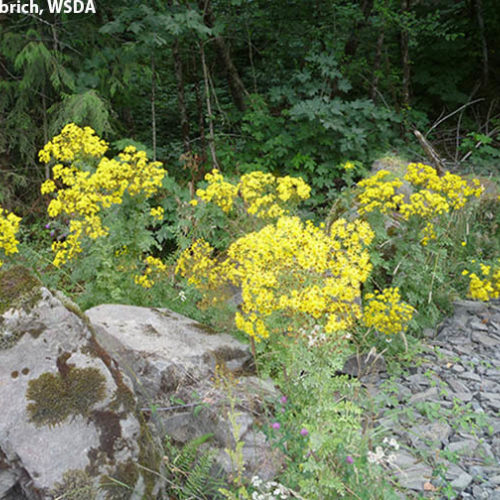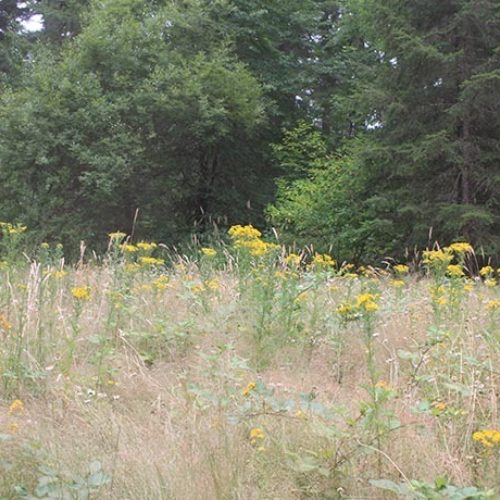Tansy Ragwort
Jacobaea vulgaris
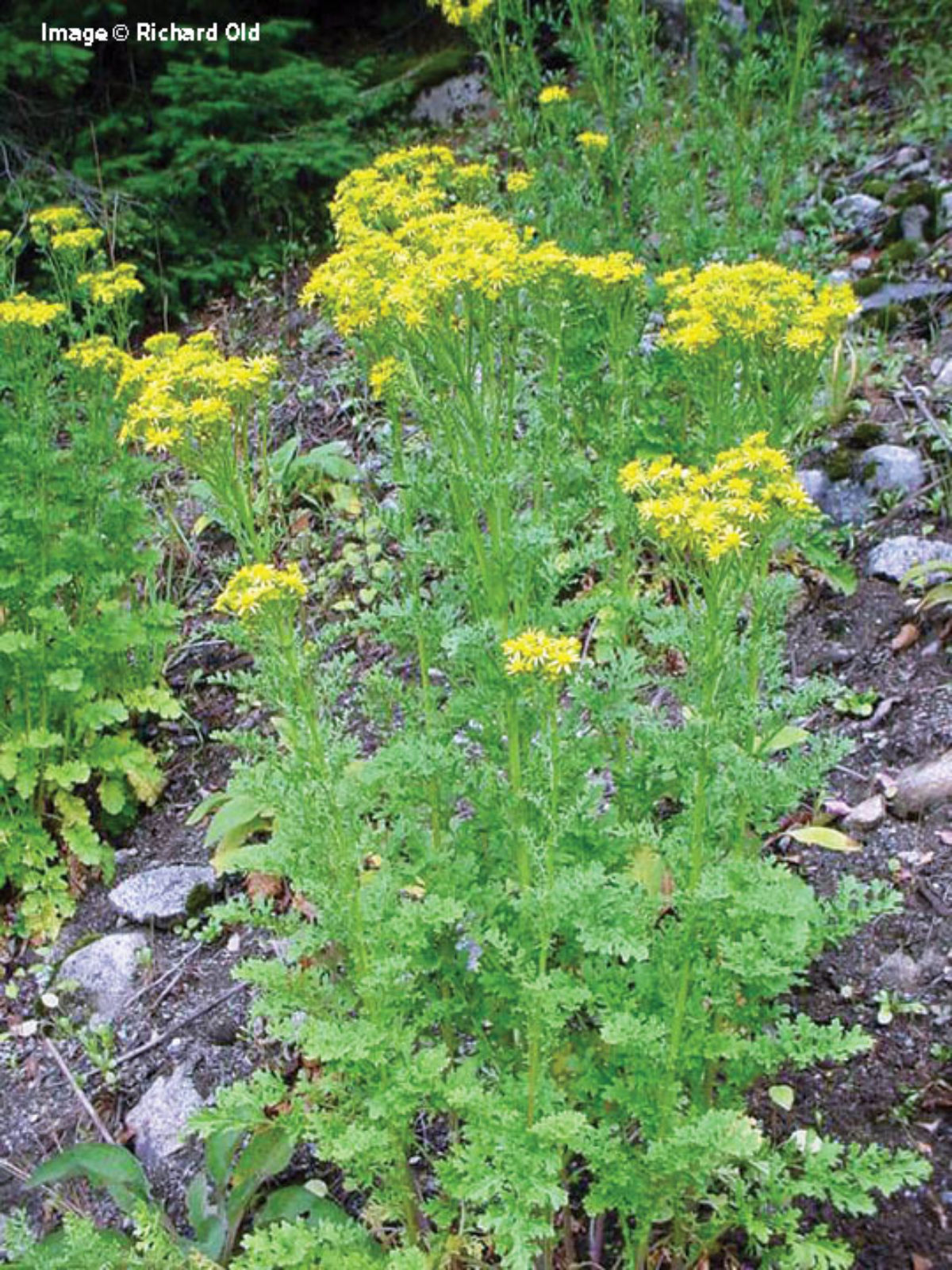
Family: Asteraceae
Other Scientific Names:
Senecio jacobaea
Other Common Names: stinking willie, staggerwort
Weed class: B
Year Listed: 1988
Native to: Northern Africa, Asia and Europe
Is this Weed Toxic?:
humans, livestock
Legal listings:
Besides its noxious weed listing, this plant is also on the Washington State Department of Agriculture's prohibited plants list, also known as the quarantine list. It is prohibited to transport, buy, sell, offer for sale, or distribute plants or plant parts of quarantined species into or within the state of Washington or to sell, offer for sale, or distribute seed packets of seed, flower seed blends, or wildflower mixes of quarantined species into or within the state of Washington. Please see WAC 16-752 and Washington State Department of Agriculture's brochure for information on the prohibited plants/quarantine list. See below for noxious weed information.
Why Is It a Noxious Weed?
Tansy ragwort is toxic and a threat to livestock and agriculture. All plant parts are toxic, with the highest amount of alkaloids in flowers then leaves, roots and stems. Toxic properties are a possible threat to humans through food chain contaminants. Find out more about tansy ragwort toxicity in our booklet: Protect Your Horses and Livestock From Toxic Plants on pages 23-24.
How would I identify it?
General Description
It is a biennial or sometimes a winter annual or perennial herbaceous plant. As a biennial, tansy ragwort spends the first year in the rosette stage with dark green basal leaves that appear ruffled. During the second year, one or more flowering stems form. Disturbance, such as mowing, may cause the plant to behave as a perennial, appearing year after year.
Flower Description
Flowerheads are in somewhat flat-topped clusters. Flowerheads yellow with many disk flowers and 13 ray flowers (which look like petals), overall having a daisy-like appearance. Flowerheads have around 13 bracts at their base with dark tips.
Leaf description
Leaves are twice divided, with petioles (leaf stems) on leaves near the base and without petioles toward stem tips. First year leaves in a basal clump (rosette). Second year leaves are alternate along the stem, 1.6 to 7.9 inches long by 0.8 to 2.4 inches wide.
Stem description
Stems reach up to 4 feet tall, numbering one to many from roots. They branch near their tips.
Fruit Seed Description
Seeds are sparsely hairy to glabrous (hairless and smooth).
May Be Confused With
Common St. Johnswort (Hypericum perforatum) and common tansy (Tanecetum vulgare), Class C noxious weeds, may be mistaken for tansy ragwort. Common St. Johnswort flowers have 5 petals per flower (tansy ragwort commonly has 13 'petals') and common tansy does not have any petals (ray flowers). Click here to see a comparison of the flowers of these species and click here to see a comparison of their leaves. In eastern Washington, the native species tall butterweed (Senecio serra) can look similar to tansy ragwort. Tall butterweed does not have the lobed, ruffled leaves that tansy ragwort has (its leaves have toothed edges) and its flowerheads only have 5 to 8 'petals', not the typical 13 of tansy ragwort. If you need help with plant identification, contact your county noxious weed coordinator.
Where does it grow?
Tansy ragwort is readily found in open, disturbed areas such as roadsides, in pastures, fields and cleared forested areas. It is not particular to soil type. Please click here to see a county level distribution map of tansy ragwort in Washington.
How Does it Reproduce?
Tansy ragwort usually reproduces by seed, although it can also reproduce vegetatively.
How Do I Control It?
General Information
Wear gloves when working with tansy ragwort After tansy ragwort control, plant areas with site appropriate plants to provide competition and reduce further invasion. Monitor areas for seedlings and resprouts.
Manual/Mechanical Control
Small infestations can be controlled manually by pulling up the entire plant, including its roots. Wear protective gloves when pulling and handling plants. If you pull flowering plants, seal them in a plastic bag and put them in the trash—not in your compost or yard waste. It's important to properly dispose of pulled plants as wilted plants are more palatable than live plants. Pull plants while the soil is still moist, roots will come out more easily. Roots left in the ground may resprout so remove as much as possible and continue to monitor the area. Plants are easier to find when they are beginning to form their flowering stems, but if you can pull the plants as rosettes, you will have less plant material to dispose of. Large infestations are better handled by a combination of manual and chemical controls. Mowing alone is not effective as tansy ragwort can re-sprout if entire plant is not removed, behaving as a perennial until the plant is removed. Mowing can be used as an interim measure to keep it from blooming and going to seed, but other control methods will be needed the same year before flowers form.
Cultural Control
Good pasture management techniques will help to prevent or reduce infestations. Seed and/or plant areas with non-invasive plants to provide competition and suppress seed germination of tansy ragwort.
Biological Control
The tansy ragwort flea beetle, Longitarsus jacobaeae, larvae and adults are destructive to tansy ragwort. Larvae feed on and within the roots and the adults feed on leaves. The ragwort seedhead fly, Botanophila seneciella, larvae feed within seedheads, often destroying all of the developing seeds. The cinnabar moth, Tyria jacobaeae, caterpillars can completely defoliate tansy ragwort. Unfortunately the cinnabar moth can also feed on native and horticultural species of Senecio and Packera so further redistribution of the moth is discouraged in many areas. If you have questions or are looking for more information about these biological control agents of tansy ragwort, please visit WSU Extension Integrated Weed Control Project.
Herbicide Control
Herbicides provide effective control of tansy ragwort when applied to rosettes in the spring or applied to the new growth initiated after fall rains. Selective herbicides can be used to target broadleaf weeds and not grasses. Remove and bag plants that have already flowered as herbicide applied at that time will not stop seed production. Grazing animals should be removed from areas that have been sprayed for two weeks. Make sure to read and follow the herbicide label. Please refer to the PNW Weed Management Handbook and contact your county noxious weed coordinator for specific recommendations.
For More Information
See our brochure Tansy Ragwort, A Toxic, Noxious Weed in Washington for more information on tansy ragwort.
Clallam County NWCB Fact Sheet on tansy ragwort
Pierce County NWCB Fact Sheet on tansy ragwort
Mason County NWCB Fact Sheet on tansy ragwort
Jefferson County NWCB Fact Sheet on tansy ragwort
Island County NWCB Fact Sheet on tansy ragwort
Stevens County NWCB Fact Sheet on tansy ragwort
King County NWCB Fact Sheet on tansy ragwort
King County NWCB Fact Sheet on tansy ragwort in Spanish
Clark County NWCB Fact Sheet on tansy ragwort
Cowlitz County NWCB Fact Sheet on tansy ragwort
Whatcom County NWCB Fact Sheet on tansy ragwort
Thurston County NWCB Fact Sheet on tansy ragwort
San Juan County NWCB Brochure on tansy ragwort
Control Options for tansy ragwort from Whatcom County NWCB
Best Management Practices for tansy ragwort from King County NWCB
See our Written Findings for more information about tansy ragwort (Senecio jacobaea)



